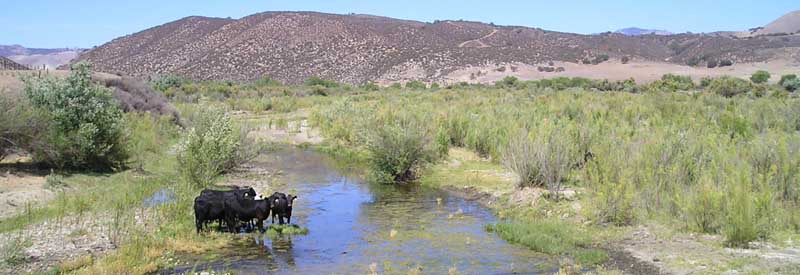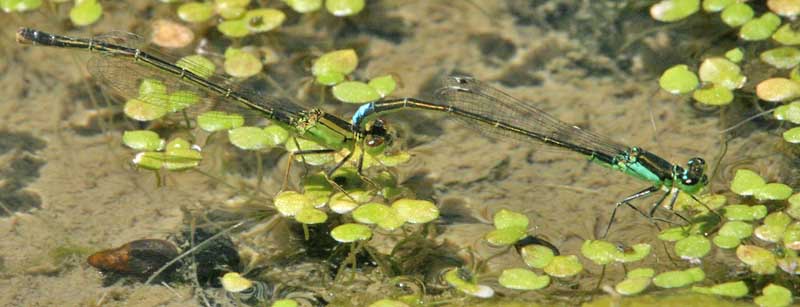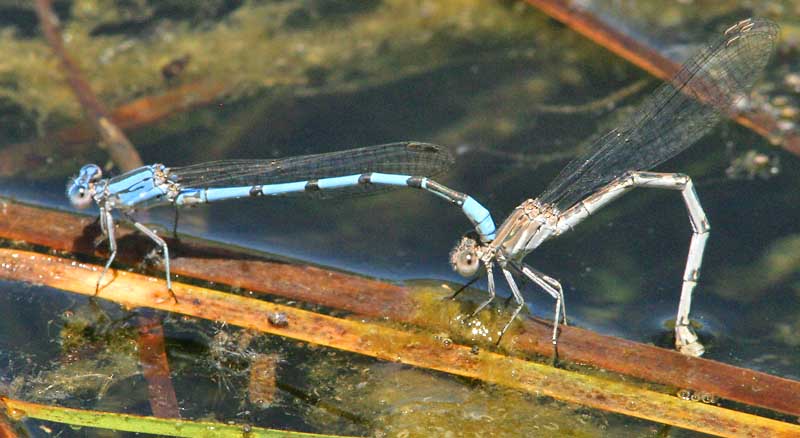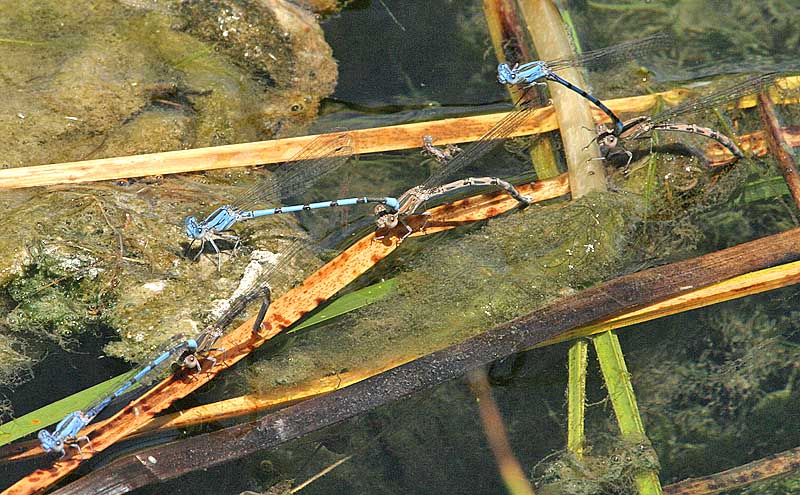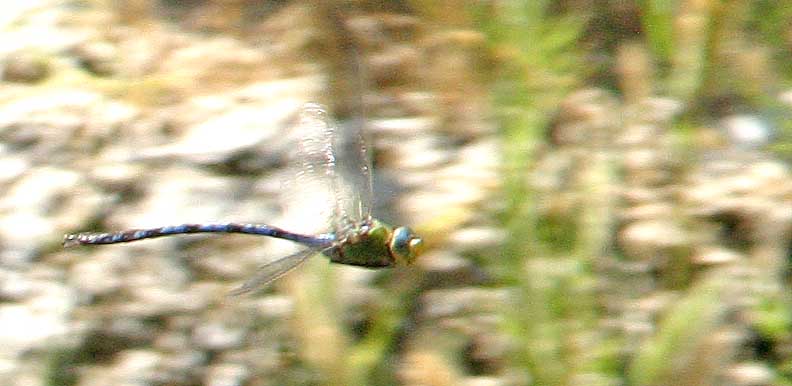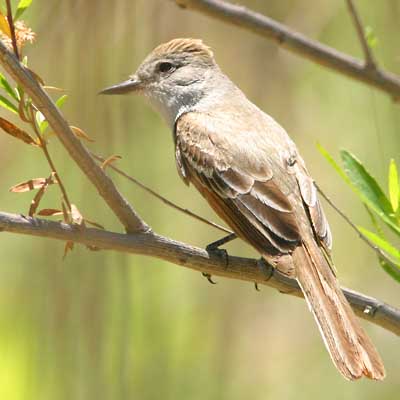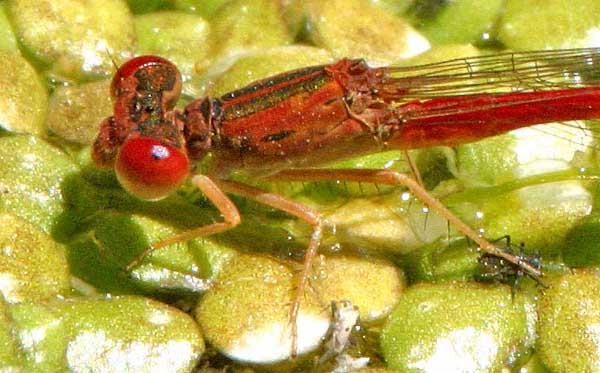| |
|
For many years I've wanted to
gain access to private ranch land bisected by the San Lorenzo
River, which forms the border between Monterey & San
Benito counties east of King City. The only previous views were from
the bridge on Lone Oak Road (above). This summer, through a long series
of circumstances, Rita and I were able to obtain permission to enter
private land. On 30 June, we spent 3 hours at midday under warm &
breezy conditions along the San Lorenzo River (right).
|
 |
|
The habitat here is very dry; indeed, the San
Lorenzo is reduced to a trickle by the fall. It runs through arid
foothills of gray pine and scattered oaks, with only the barest strip
of short willows to hold riparian species (e.g., Ash-throated
Flycatcher, right). The owners had removed the bulls from the riverbed
but there were still a pack of non-native wild pigs (below) rooting
through the bits of lush vegetation in this dry country
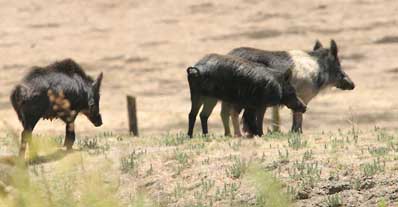
|
|
For odes, the habitat was very different than
elsewhere in Monterey County. While Pacific & Western Forktails
dominate west of the Salinas Valley, here it was Black-fronted
Forktail that was common (ovipositing pair in tandem, below).
|
|
|
|
|
Desert Firetail (right) was also
common. Bluets, in contrast, were quite scarce and I failed to focus on
them for specific i.d. Most abundant were California Dancer.
I estimated over a thousand on our half-mile stretch of river, with
much ovipositing (see below) and abundant tenerals. We netted four
males for in-hand i.d. All were clearly A. agrioides [A.
nahuana has not been recorded in MTY].
|
|
|
|
|
|
|
|
Among the Anisoptera, variety was good.
Flame Skimmers were very conspicuous — almost all were males patrolling
stretches of the river. We kept picking up new species as we worked our
way down the Monterey County side of the river (most species on the
list were in both counties, except those that were scarce — those that
we found only 1-2 were just in MTY, except that all of the darners
crossed back and forth across the stream).
|
|
|
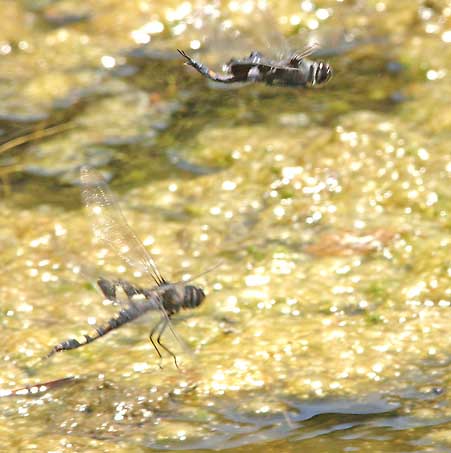 |
It was very impressive to watch the tandem
ovipositing pairs of Black Saddlebags. They fly above
the water surface in tandem (above) and then from time to time the male
releases the female (left) so that she dips down to the water surfaces
and releases eggs. In the blink of an eye, they are back in tandem
again, moving to another spot to repeat this behavior.
The biggest surprise of the day was finding Giant
Darner patrolling this stream (below). In Monterey County,
this fabulous species had previously only been known from the larger
Arroyo Seco River that runs east out of the Santa Lucia Range. I've
still never seen a Giant Darner perched, so again I was limited to
trying to snap flight shots.
|
|
|
|
|
|
Our list for 30 June 2007:
- American Rubyspot 8
- California Dancer 1000 +
- blue-type bluet (N/Familiar), likely Familiar
here 6
- dark-type bluet (Arroyo/Tule), likely Tule by
habitat 1 m
- Desert Firetail 30
- Pacific Forktail 1 m
- Black-fronted Forktail 50
- Western Forktail 1 f
- Common Green Darner 2
- Giant Darner 3
- Blue-eyed Darner 2
- Gray Sanddragon 2
- Western Pondhawk 8
- Common Whitetail 1 m
- Flame Skimmer 80
- Cardinal Meadowhawk 2
- Striped Meadowhawk 1 teneral
- Black Saddlebags 20
Don Roberson & Rita Carratello
|
While Giant Darners were a
surprise, the best species was Gray Sanddragon
(below). Rita spotted the first of our two males as it flitted from dry
cow-patty to another cow-patty on a sandy bar well back from the river.
This gomphid was shy and we never got very close, so the telephoto lens
was a necessity. There was only one previous record for this species: a
female photographed by Bob Behrstock on 1 July 1997 on the Salinas
River near Salinas. We were specifically searching for this species on
the San Lorenzo.
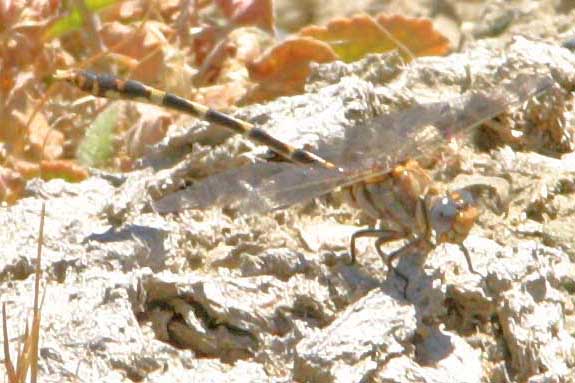
|
|
|
|
